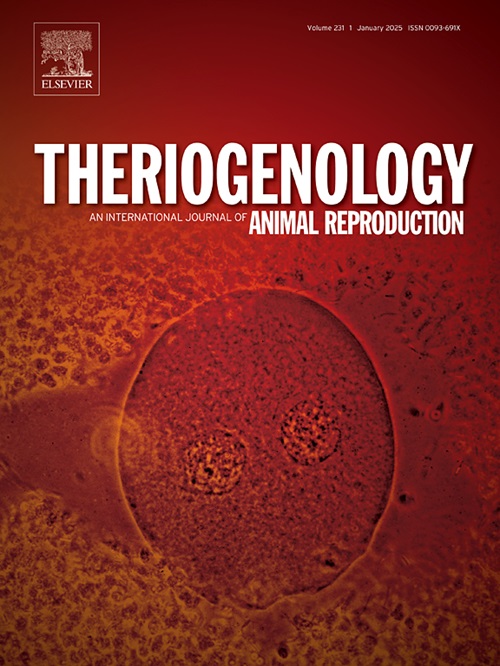敲低Mageb16会破坏小鼠着床前发育过程中的细胞增殖和谱系规范。
IF 2.4
2区 农林科学
Q3 REPRODUCTIVE BIOLOGY
引用次数: 0
摘要
黑色素瘤抗原家族成员B16 (Mageb16)对维持胚胎干细胞的多能性和分化至关重要。然而,Mageb16在胚胎着床前发育中的表达模式和生物学作用尚不清楚。在这项研究中,我们发现Mageb16 mRNA的表达在着床前发育过程中是动态的,在桑葚胚期表达水平最高。通过小干扰RNA (siRNA)微注射有效降低了mageb16mrna的丰度。Mageb16敲除显著降低囊胚形成率、外生物形成率和每个胚胎的细胞总数。重要的是,MAGEB16的减少阻断了G2/M期的细胞周期进程,破坏了谱系分离,但没有引起植入前小鼠胚胎的DNA损伤。有趣的是,Mageb16敲除增加了组蛋白H3赖氨酸27乙酰化(H3K27ac)的水平,但减弱了转录活性。总之,我们的研究结果揭示了Mageb16在小鼠着床前发育中的关键作用,可能是通过控制细胞增殖和谱系规范。本文章由计算机程序翻译,如有差异,请以英文原文为准。
Knockdown of Mageb16 disrupts cell proliferation and lineage specification during mouse preimplantation development
Melanoma antigen family member B16 (Mageb16) is crucial for maintaining the pluripotency and differentiation of embryonic stem cells. However, the expression pattern and biological role of Mageb16 during preimplantation development remain unclear. In this study, we showed that Mageb16 mRNA expression was dynamic throughout preimplantation development, with the highest level occurring at the morula stage. The abundance of Mageb16 mRNA was effectively reduced via small interfering RNA (siRNA) microinjection. Mageb16 knockdown significantly reduced the blastocyst formation rate, outgrowth formation rate, and total number of cells per embryo. Importantly, the reduction in MAGEB16 blocked cell cycle progression at the G2/M phase and disrupted lineage segregation but did not induce DNA damage in preimplantation mouse embryos. Intriguingly, Mageb16 knockdown increased the level of histone H3 lysine 27 acetylation (H3K27ac) but attenuated transcriptional activity. Together, our results reveal a crucial role for Mageb16 in mouse preimplantation development, likely by controlling cell proliferation and lineage specification.
求助全文
通过发布文献求助,成功后即可免费获取论文全文。
去求助
来源期刊

Theriogenology
农林科学-生殖生物学
CiteScore
5.50
自引率
14.30%
发文量
387
审稿时长
72 days
期刊介绍:
Theriogenology provides an international forum for researchers, clinicians, and industry professionals in animal reproductive biology. This acclaimed journal publishes articles on a wide range of topics in reproductive and developmental biology, of domestic mammal, avian, and aquatic species as well as wild species which are the object of veterinary care in research or conservation programs.
 求助内容:
求助内容: 应助结果提醒方式:
应助结果提醒方式:


